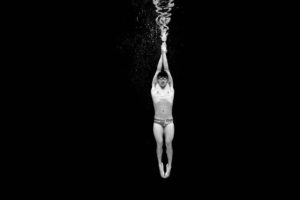Sports Science Crash Course
Sport Science Crash Course
The resources to learn how everyday coaches and swimmers can apply the training ideas, tools, and tactics elite teams use to swim faster and prevent injuries.
Biomechanics Breakdown

Explore how to separate and analyze every movement in the water, to uncover techniques that promote faster swimming, and those that may be preventing improvements
-
Mastering Triton Score
Triton Score measures performance and gives you an overview of your Readiness, Focus and Intensity. The score offers a fast and easy way to…
-
Introducing the All-New TritonWear App
Measuring performance starts with accurate data collection. TritonWear’s small wearable tucks comfortably in swim caps, capturing 30+ data points.
-
TritonWear Offers Free Injury & illness Prevention Tool Amid COVID-19 Crisis
Swimmers globally have trusted Load Monitoring to keep them training safely for years – now all athletes, in any sport, can reduce their risk for free.
-
Learn How to Swim at a Faster Speed
Improving individual metrics generally leads to improved outcomes, but it’s not always a given. Sometimes, in developing certain metrics…
-
Swim Faster By Perfecting Stroke Technique
Being in the water means you’re working with plenty of resistance, and resistance equals drag, which is the opposing force against your forward motion in…
Physiology Fuel-Up

Learn to maximize the body’s full capabilities, to be in peak shape for competition, without risking injury
-
See Seven Off-Season Practice Do’s and Don’ts
The few weeks between the end of swimming championships season and the start of the next competition season can be a strange time for many swimmers.
-
Build Your Swimming Endurance With These 4 Training Tips
No matter what type of swimmer you are, whether you’re a pool or open water swimmer, or you swim competitively or recreationally, increasing…
-
Swimmers Can Recover Faster With These 8 Tips
When you are swimming multiple times a day at a high intensity, your body needs a chance to refuel and repair. Do this…
-
Keeping Athletes Healthy through Load Monitoring
While most athletes train at 20-30 percent risk of injury, effective load monitoring reduces and keeps this risk below 5 percent.
-
8 Tips for Fast Recovery
Recovery is an essential part of the training and racing cycle. Here are 8 tips to help you recover quickly and prepare for the next high intensity effort.
